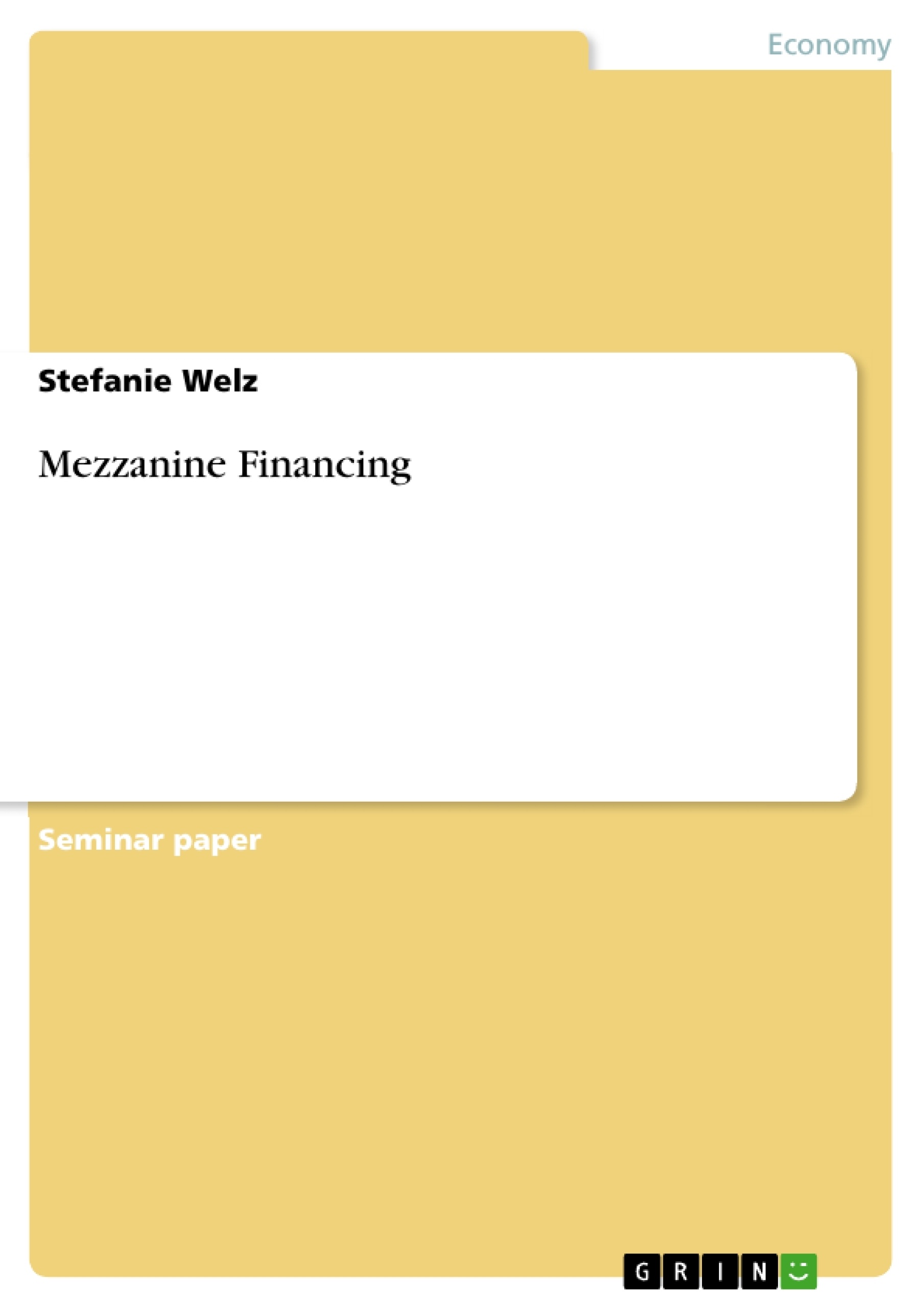The term Mezzanine resounded throughout the land. Mezzanine financing instruments, which represent a mixed form between equity and debt capital, are considered as the financing alternative particularly to medium-size enterprises, whose financial situation substantially worsened due to the difficult overall economic situation in the last years. Particular with regard to Basel II and the more restrictive granting of loans lead to an intensification of the situation due to the fact that German medium-size companies traditionally have a little equity ratio which is however relevant for their rating and thus make it difficult to revert to the financing practice of the house bank so far. In order to improve the equity situation, Mezzanine financing instruments can be used, which are at least economically assigned to equity depending on the definition during the rating process. This assignment however primarily addresses the issue of economic aspects of the financing instrument which have relevant influence on the representation of the balance sheet.
1.2 Scope of work
The assignment Mezzanine financing starts with the introduction which includes the executive summary and the scope of work that is realized in here. The second chapter deals with a detailed definition of the problem that causes the relevance of this assignment, the determination of the objectives as well as the methodology that describes the assignment’s structured procedure. Chapter three is focused on the underlying theories of Mezzanine financing. At this juncture in particular the principal agent, the transaction cost and the property rights theory according to Mezzanine financing are being analyzed.
Chapter four is about basics, typical characteristics and the application areas of Mezzanine capital whereas the chapter five deals with the benefits of Mezzanine capital. Finally, the results of this assignment are summarized; especially whether the set objectives are reached as well as critical comments about the assignment are given in the last chapter.
Inhaltsverzeichnis (Table of Contents)
- 1 INTRODUCTION
- 1.1 Executive Summary
- 1.2 Scope of work
- 2 PROBLEM AND RESEARCH
- 2.1 Problem definition
- 2.2 Relevance and motivation
- 2.3 Methodology
- 3 RELEVANT THEORIES
- 3.1 Principal Agent Theory
- 3.2 Transaction Cost Theory
- 3.3 Property Rights Theory
- 4 FINANCING VIA MEZZANINE
- 4.1 Definition
- 4.2 Characteristics
- 4.2.1 Mixed form
- 4.2.2 Debt capital related components
- 4.2.3 Equity related components
- 4.3 Application of Mezzanine capital
- 5 BENEFITS OF MEZZANINE CAPITAL
- 6 CONCLUSION
Zielsetzung und Themenschwerpunkte (Objectives and Key Themes)
This assignment focuses on the economic aspects of mezzanine financing, particularly its use as a financing alternative for medium-sized enterprises (SMEs) facing financial difficulties. The study examines the application of mezzanine financing instruments in enhancing the equity situation of SMEs and their impact on the representation of the balance sheet.
- Mezzanine financing as a financing alternative for SMEs
- Impact of mezzanine financing on the equity situation of SMEs
- Economic aspects of mezzanine financing
- Representation of mezzanine financing on the balance sheet
- Role of mezzanine financing in the context of Basel II and restrictive lending practices
Zusammenfassung der Kapitel (Chapter Summaries)
The introduction provides an overview of mezzanine financing, highlighting its relevance for SMEs facing challenging economic conditions. The chapter also emphasizes the importance of understanding the economic aspects of mezzanine financing for accurate balance sheet representation.
The second chapter delves into the problem definition, outlining the motivation and relevance of the study. The methodology employed in the research is also discussed.
Chapter three explores relevant theories that underpin the understanding of mezzanine financing, including the Principal Agent Theory, Transaction Cost Theory, and Property Rights Theory.
Chapter four delves into the definition, characteristics, and application of mezzanine capital. It examines the mixed form nature of mezzanine financing, exploring both debt and equity components. The chapter further discusses the use of mezzanine capital in various business contexts.
Chapter five focuses on the benefits of mezzanine capital, highlighting its advantages for SMEs.
Schlüsselwörter (Keywords)
The key focus areas of this assignment are mezzanine financing, medium-sized enterprises (SMEs), equity, balance sheet, Basel II, restrictive lending practices, and financial instruments. The study explores the economic aspects of mezzanine financing and its role in addressing the financial challenges faced by SMEs, with particular attention to its impact on equity and balance sheet representation.
- Quote paper
- Stefanie Welz (Author), 2006, Mezzanine Financing, Munich, GRIN Verlag, https://www.grin.com/document/73413




